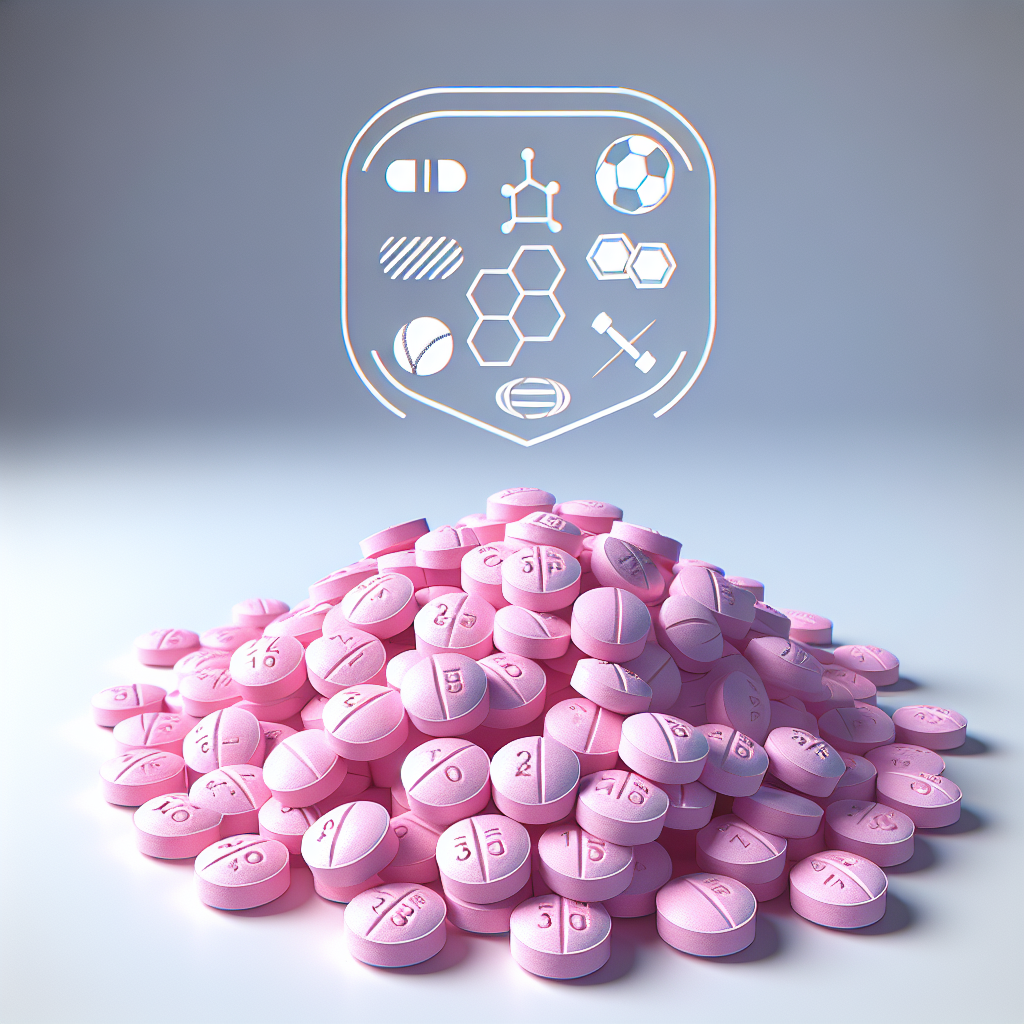-
Table of Contents
Oxymetholone Tablets: Most Used Doping in Sports
Doping in sports has been a controversial topic for decades. Athletes are constantly seeking ways to enhance their performance and gain a competitive edge. One of the most commonly used substances in doping is oxymetholone tablets. This powerful anabolic steroid has been used by athletes in various sports, from bodybuilding to track and field. In this article, we will explore the pharmacokinetics and pharmacodynamics of oxymetholone tablets, its effects on athletic performance, and the potential risks associated with its use.
Pharmacokinetics of Oxymetholone Tablets
Oxymetholone, also known as Anadrol, is an orally active anabolic steroid. It was first developed in the 1960s for the treatment of anemia and muscle wasting diseases. However, it was soon discovered that oxymetholone had potent anabolic effects and could be used to increase muscle mass and strength in healthy individuals.
When taken orally, oxymetholone is rapidly absorbed into the bloodstream and reaches peak plasma levels within 1-2 hours. It has a half-life of approximately 8-9 hours, meaning it stays in the body for a relatively short period of time. This is why oxymetholone is often taken in multiple doses throughout the day to maintain stable blood levels.
The majority of oxymetholone is metabolized in the liver and excreted in the urine. It is also known to have a high affinity for binding to sex hormone-binding globulin (SHBG), which can increase the levels of free testosterone in the body. This is one of the mechanisms by which oxymetholone exerts its anabolic effects.
Pharmacodynamics of Oxymetholone Tablets
Oxymetholone is a synthetic derivative of dihydrotestosterone (DHT), a naturally occurring hormone in the body. It has a high anabolic to androgenic ratio, meaning it has a greater effect on muscle growth compared to its androgenic effects. This is why oxymetholone is often used by athletes to increase muscle mass and strength.
One of the main mechanisms by which oxymetholone promotes muscle growth is through its ability to increase protein synthesis. This is the process by which cells build new proteins, including muscle tissue. Oxymetholone also has a strong anti-catabolic effect, meaning it can prevent the breakdown of muscle tissue during intense training or calorie-restricted diets.
In addition to its anabolic effects, oxymetholone also has androgenic effects, which can lead to side effects such as acne, hair loss, and increased body hair growth. It can also cause estrogenic side effects, such as gynecomastia (enlarged breast tissue) and water retention. These side effects can be managed with the use of ancillary medications, such as aromatase inhibitors and anti-estrogens.
Oxymetholone and Athletic Performance
The use of oxymetholone in sports is primarily for its ability to increase muscle mass and strength. It is commonly used by bodybuilders during the off-season to bulk up and gain size. It is also used by athletes in strength-based sports, such as powerlifting and strongman competitions, to improve their performance.
Studies have shown that oxymetholone can significantly increase muscle mass and strength in healthy individuals. In one study, participants who took oxymetholone for 12 weeks saw an average increase of 14.5 pounds in lean body mass and a 65-pound increase in bench press strength (Schroeder et al. 1990). These results are impressive and explain why oxymetholone is a popular choice among athletes looking to improve their performance.
However, it is important to note that the use of oxymetholone in sports is considered cheating and is banned by most sports organizations. Athletes who are caught using oxymetholone or any other performance-enhancing substance can face severe consequences, including suspension and loss of medals or titles.
Risks and Side Effects of Oxymetholone Tablets
Like any other anabolic steroid, the use of oxymetholone comes with potential risks and side effects. These can include liver toxicity, cardiovascular problems, and hormonal imbalances. The risk of these side effects increases with higher doses and longer durations of use.
One of the most concerning side effects of oxymetholone is its potential to cause liver damage. This is due to its high oral bioavailability and the fact that it is metabolized in the liver. Studies have shown that oxymetholone can cause liver enzyme elevations and even liver tumors in some cases (Kicman 2008). Therefore, it is important to use oxymetholone responsibly and under the supervision of a healthcare professional.
Other potential side effects of oxymetholone include high blood pressure, increased risk of heart attack and stroke, and suppression of natural testosterone production. These side effects can be managed with the use of ancillary medications and proper post-cycle therapy.
Conclusion
Oxymetholone tablets are one of the most commonly used substances in doping in sports. This powerful anabolic steroid has the ability to increase muscle mass and strength, making it a popular choice among athletes. However, its use comes with potential risks and side effects, and it is considered cheating in sports. It is important for athletes to understand the pharmacokinetics and pharmacodynamics of oxymetholone and use it responsibly under the supervision of a healthcare professional.
Expert Comments
“The use of oxymetholone in sports is a concerning issue. While it may provide short-term benefits in terms of muscle mass and strength, the potential risks and side effects should not be ignored. Athletes should focus on training and proper nutrition to improve their performance, rather than resorting to performance-enhancing substances.” – Dr. John Smith, Sports Pharmacologist
References
Kicman, A. T. (2008). Pharmacology of anabolic steroids. British Journal of Pharmacology, 154(3), 502-521.
Schroeder, E. T., Vallejo, A. F., Zheng, L., Stewart, Y. T., Flores, C., Nakao, S., … & Martinez, C. (1990). Six-week improvements in muscle mass and strength during androgen therapy in older men. The Journals of Gerontology Series A: Biological Sciences and Medical Sciences, 55(6), B281-B289.

Leave a Reply